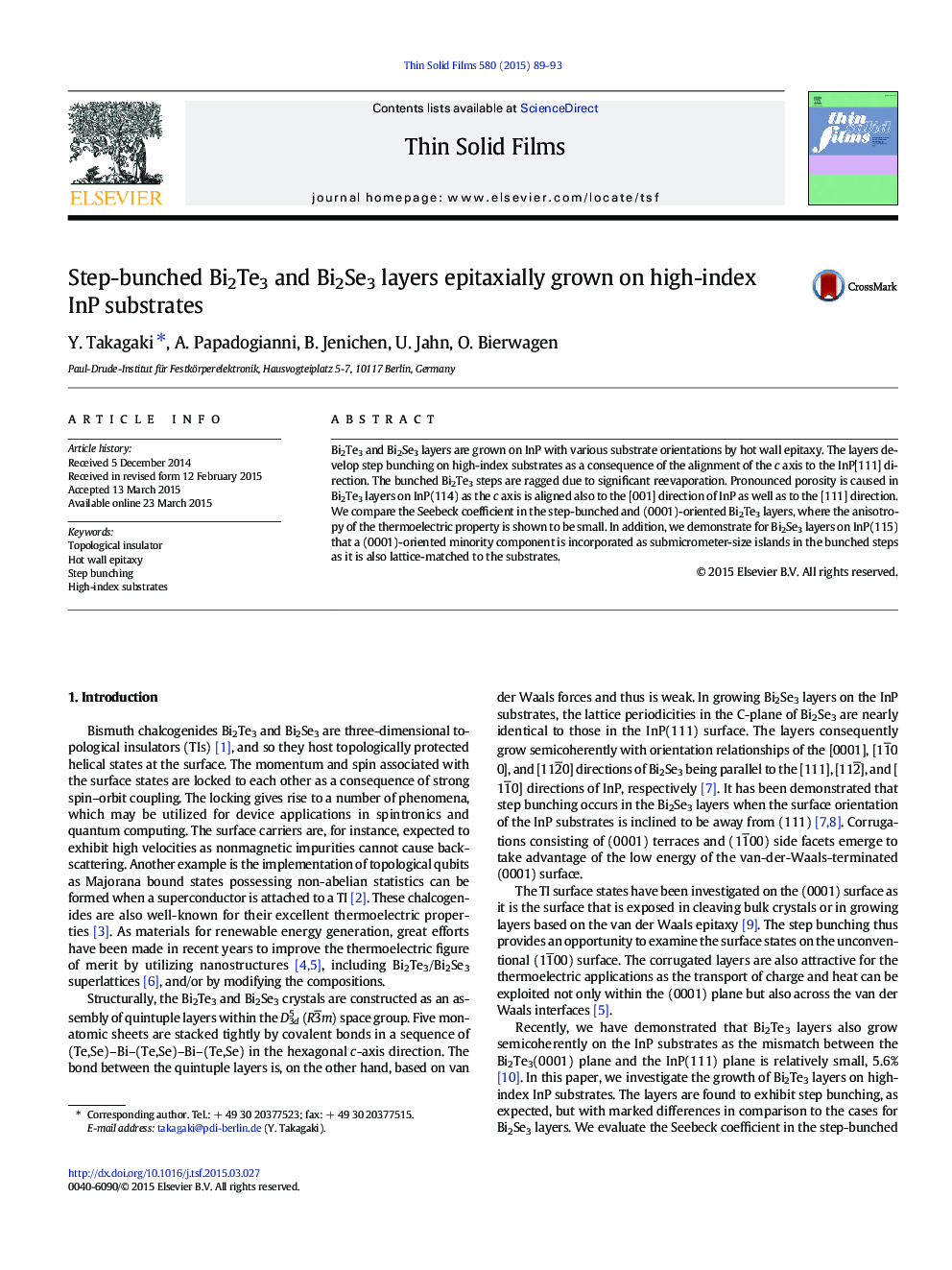| Article ID | Journal | Published Year | Pages | File Type |
|---|---|---|---|---|
| 1664774 | Thin Solid Films | 2015 | 5 Pages |
•Step bunching is found in Bi2Te3 layers grown on high-index InP substrates.•Bi2Te3 layers on InP(114) are porous due to a mixture of two growth orientations.•On InP(115), a minority component is contained in layers as submicron-size islands.•The anisotropy of the Seebeck coefficient in corrugated Bi2Te3 layers is small.
Bi2Te3 and Bi2Se3 layers are grown on InP with various substrate orientations by hot wall epitaxy. The layers develop step bunching on high-index substrates as a consequence of the alignment of the c axis to the InP[111] direction. The bunched Bi2Te3 steps are ragged due to significant reevaporation. Pronounced porosity is caused in Bi2Te3 layers on InP(114) as the c axis is aligned also to the [001] direction of InP as well as to the [111] direction. We compare the Seebeck coefficient in the step-bunched and (0001)-oriented Bi2Te3 layers, where the anisotropy of the thermoelectric property is shown to be small. In addition, we demonstrate for Bi2Se3 layers on InP(115) that a (0001)-oriented minority component is incorporated as submicrometer-size islands in the bunched steps as it is also lattice-matched to the substrates.
